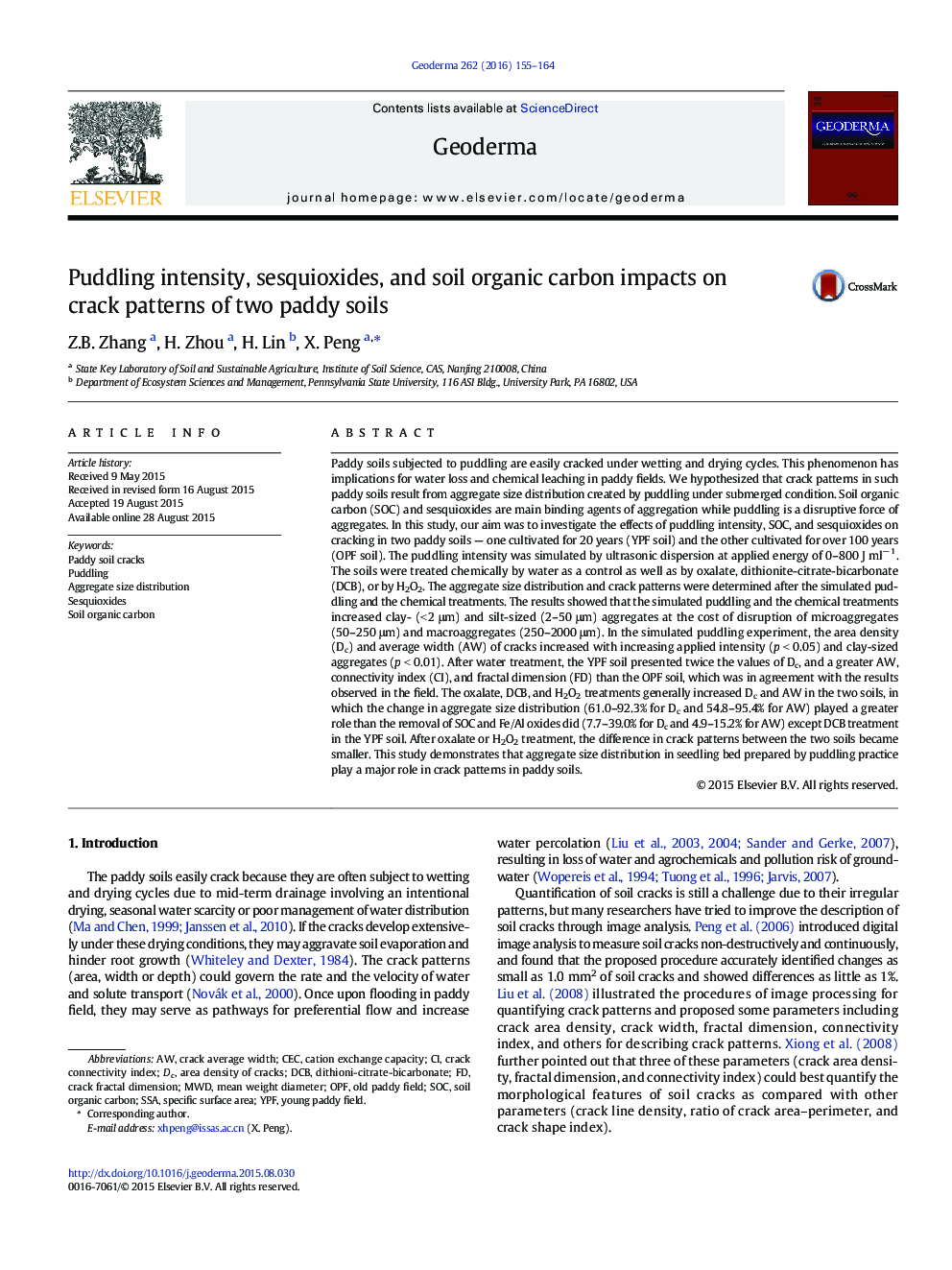| کد مقاله | کد نشریه | سال انتشار | مقاله انگلیسی | نسخه تمام متن |
|---|---|---|---|---|
| 4573060 | 1629454 | 2016 | 10 صفحه PDF | دانلود رایگان |

• Fine aggregates (< 50 μm) and crack area density increased with puddling intensity.
• The removal of SOC and Fe/Al oxides increased fine aggregates (< 50 μm).
• Physical effect of SOC and Fe/Al oxides on cracking was higher than chemical effect.
• The YPF soil was higher in crack area density than the OPF soil.
• The difference in Feo/Alo and SOC between the two soils induced cracking difference.
Paddy soils subjected to puddling are easily cracked under wetting and drying cycles. This phenomenon has implications for water loss and chemical leaching in paddy fields. We hypothesized that crack patterns in such paddy soils result from aggregate size distribution created by puddling under submerged condition. Soil organic carbon (SOC) and sesquioxides are main binding agents of aggregation while puddling is a disruptive force of aggregates. In this study, our aim was to investigate the effects of puddling intensity, SOC, and sesquioxides on cracking in two paddy soils — one cultivated for 20 years (YPF soil) and the other cultivated for over 100 years (OPF soil). The puddling intensity was simulated by ultrasonic dispersion at applied energy of 0–800 J ml− 1. The soils were treated chemically by water as a control as well as by oxalate, dithionite-citrate-bicarbonate (DCB), or by H2O2. The aggregate size distribution and crack patterns were determined after the simulated puddling and the chemical treatments. The results showed that the simulated puddling and the chemical treatments increased clay- (< 2 μm) and silt-sized (2–50 μm) aggregates at the cost of disruption of microaggregates (50–250 μm) and macroaggregates (250–2000 μm). In the simulated puddling experiment, the area density (Dc) and average width (AW) of cracks increased with increasing applied intensity (p < 0.05) and clay-sized aggregates (p < 0.01). After water treatment, the YPF soil presented twice the values of Dc, and a greater AW, connectivity index (CI), and fractal dimension (FD) than the OPF soil, which was in agreement with the results observed in the field. The oxalate, DCB, and H2O2 treatments generally increased Dc and AW in the two soils, in which the change in aggregate size distribution (61.0–92.3% for Dc and 54.8–95.4% for AW) played a greater role than the removal of SOC and Fe/Al oxides did (7.7–39.0% for Dc and 4.9–15.2% for AW) except DCB treatment in the YPF soil. After oxalate or H2O2 treatment, the difference in crack patterns between the two soils became smaller. This study demonstrates that aggregate size distribution in seedling bed prepared by puddling practice play a major role in crack patterns in paddy soils.
Journal: Geoderma - Volume 262, 15 January 2016, Pages 155–164